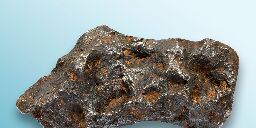This Radical New Metal from Outer Space Could Transform Everything—from Electric Vehicles to Nuclear Submarines



popularmechanics.com
This Radical New Metal from Outer Space Could Transform Everything—from Electric Vehicles to Nuclear Submarines::Two high-profile labs are on the verge mass produce a metal only found in space—tetrantaenite. That could revolutionize how how we make everything—from phones to nuclear subs.
You are viewing a single comment
I don’t think it’s misleading. Tetrataenite is made up of known, common, metals but the method to produce the same exact product as found from space has not been done yet.
If it’s accomplished then the US, and in turn rest of the world, can stop relying on China for rare earth metals. This new alloy can replace the magnetic rare earth material the world needs and if it happens will be a big step forward from relying on a sole country that’s readying to slow or possibly stop supplying in the coming years.
Also, creating this alloy would be cleaner and more environmentally friendly than current mining in Mongolia that’s poisoning the land.
Quoting from the article:
“Tetrataenite can mitigate those issues. Its base metals, iron and nickel, are two of the most abundant metals on earth. They’re the standard elements in stainless steel, for example. Both are cheaper and easier to extract from the earth than rare earths, with less severe environmental repercussions.
Tetrataenite might also allow producers to bypass a crucial processing stage required to purify the metals after they’re separated from other minerals at the mine. That step is done almost entirely in China, which controls 87 percent of worldwide rare-earth processing. China so dominates the mining and processing of rare earths that in 2018, the U.S. Congress ordered the Pentagon to stop purchasing neodymium magnets made in China. Last year, several U.S. senators proposed further legislation that would prevent any defense contractors from sourcing any rare earths from China by 2026.
If we are in a confrontation with Beijing, they can stop the supply,” says the Atlantic Council’s Ariel Cohen, who notes that the U.S. currently imports 95 percent of its rare-earth compounds and magnets. “The whole supply chain has to be beefed up in the U.S.,” he says. “So if overall the process [for tetrataenite] is economical and safer or environmentally better, then why not?”
Underscoring the stakes, the U.S. Department of Defense gave Mountain Pass a $35 million grant in 2022 so that it could begin processing rare earths in California, bypassing China completely. That’s in addition to $9.6 million the Pentagon provided in 2020 to bolster the mine’s output. MP Materials is also constructing a manufacturing facility in Fort Worth, Texas, that it says will churn out enough permanent magnets laden with rare earths by 2025 to power 500,000 electric vehicle motors—a quantity that could power every new electric vehicle bought in the country.
One of their biggest obstacles is finding a way to deal with temperatures. At temperatures above several hundred degrees, iron and nickel atoms like to move around. (This is what lent meteoric iron its malleability, making it popular among earlier societies and dagger-wielding Egyptian pharaohs.) But as alloys of iron and nickel cool down, the atoms inside become less mobile, and therefore less likely to arrange themselves into the tetragonal structure that creates magnetic tetrataenite. Manufacturing the material on a large scale will require researchers to dramatically speed up how atoms of iron and nickel arrange themselves into that stable tetragonal structure and remain locked in place as the metals cool to ambient temperatures.
That’s only half the challenge. Permanent magnets made of rare earths must withstand high temperatures, sometimes above 300 degrees Fahrenheit in electric-vehicle motors, for instance. But heating tetrataenite to those levels breaks down the bonds between atoms, collapsing the tetragonal structure that gives the material its impressive magnetic properties.
The real challenge is not in making the tetragonal or getting the atoms arranged the way you want them, but keeping them in that state while you go about working in the real world,” Lograsso says.“
A lot of these miracle materials have finicky molecular structures. It's a problem with electric batteries as well. I'm a chemist and everytime I think of material science I think there is something limiting about it, it can only go so far and you can only do so much, so any time I hear of some new super material I'm skeptical. Always happy to be proven wrong though.
You’re correct and it’s yet to be shown if the alloy will work as hoped. My post was only to help show it’s not a misleading title.
It may not ever work properly as a rare earth metal replacement but nothing about the title promises that. Just that it could and it’s being worked on. Something to be hopeful for but that’s all for now.